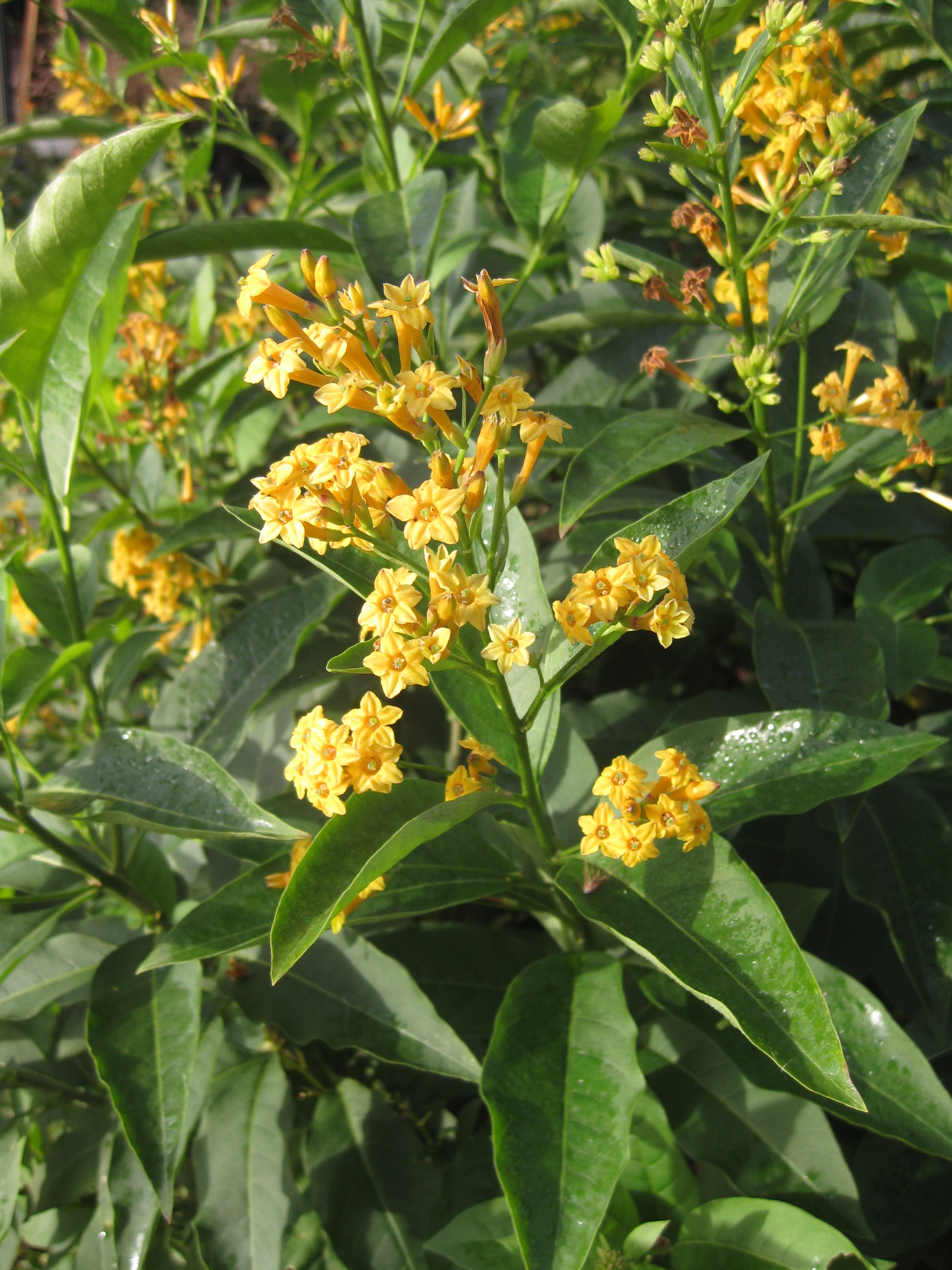Resource Library
Plant of the Week: Cestrum aurantiacum Yellow and Orange Jasmine
As a horticulturist trained and living in the temperate zone, a lot of tropical and subtropical shrubs have been background noise in my life. I knew they were there but didn’t really know much about them. Cestrum, a large group of tropical shrubs, was one of these that recently caught my attention because some species are root hardy here in north Arkansas.

Cestrum is one of the plants with the attributes gardeners look for when attracting hummingbirds into their gardens. (Image courtesy Gerald Klingaman.) Credit mandatory.
Cestrums are a large group of about 150 species of open, summer flowering shrubs or vines of the nightshade family that range from Mexico into South America. In tropical climes they may reach 15 feet in height but as a freeze back shrub seldom exceed five feet tall and wide.
The most common Cestrums seen in gardens have yellow, orange or gold flowers and seem to be selections of C. aurantiacum from Guatemala or hybrids with it. This plant has large glabrous, ovate and shiny, green, entire-margined leaves to six inches long. When crushed, they are said have the odor of a freshly-washed dog. In their native habitat plants are evergreen, but in temperate climates the foliage persists until the first 25ºF night of the fall season.
Orange, yellow or gold flowers are produced from late spring through the first killing frost of fall in terminal clusters to 4 inches across. Individual flowers are numerous in the cluster, trumpet shaped with five petals and the tube to about an inch long. In the evening, a sweet jasmine scented fragrance is produced. The fruit is a gray-white nickel-sized berry, but I have yet to see fruit form on our plant.
Cestrums have been in gardens since the Victorian era but were listed — as if everyone had their own greenhouse — as conservatory plants. Because most English garden books of the era were written in England or in the cold northeastern states, their failure to recognize the potential of these tropicals as landscape plants for the south is understandable. Over the last century they were used in California, South Texas and Florida, but remained largely unknown to the rest of the country until the new plant craze hit in the 1990s.
“Orange Peel” and “Greystone Gold” (said to be a hybrid from North Carolina’s Norman Beal) are cultivars currently in the trade. They are top hardy in zone 8 but root hardy through zone 7, and perhaps even into zone 6 if well mulched. Our plants at the Botanical Garden of the Ozarks survived unharmed several days of temperatures as low as 5ºF.
Cestrum is listed as a hummingbird plant with butterflies not mentioned. While none of our native butterflies use this member of the nightshade family for egg laying, they do not seem to shun the nectar produced by the blossoms. Toxic compounds in the foliage discourage deer browse.
Because Cestrum are big plants they need room to develop a large top. They are best used at the back of a perennial border or as specimens around a patio area where hummingbirds would likely congregate. They are tough, drought-tolerant plants that do well in any reasonable garden soil. While best in full sun, they will tolerate light shade and may even prefer afternoon shade. When the stems die down in the fall, cut the plants back and apply a loose mulch to protect the crown.